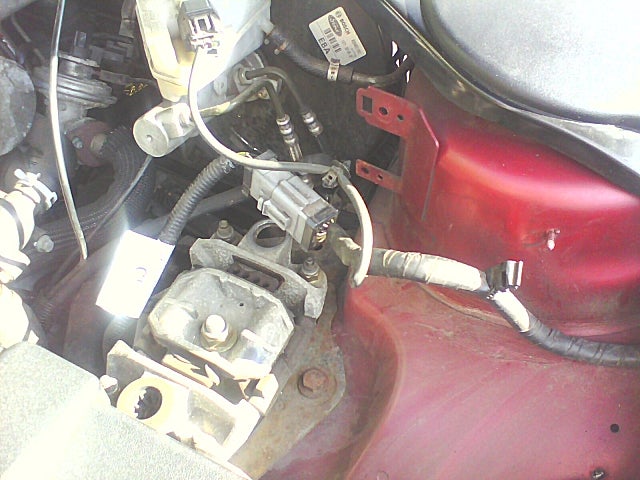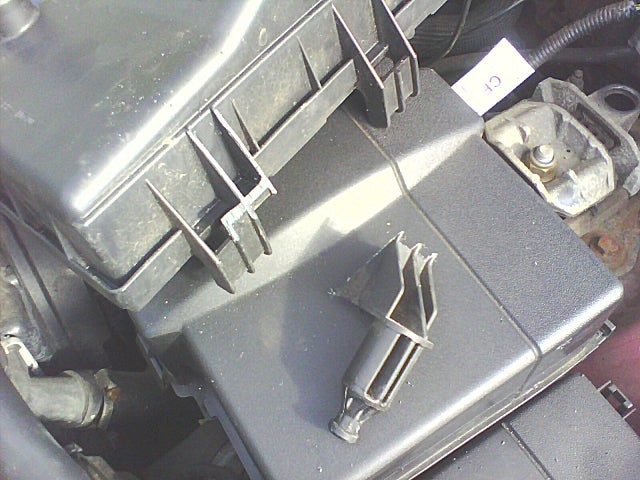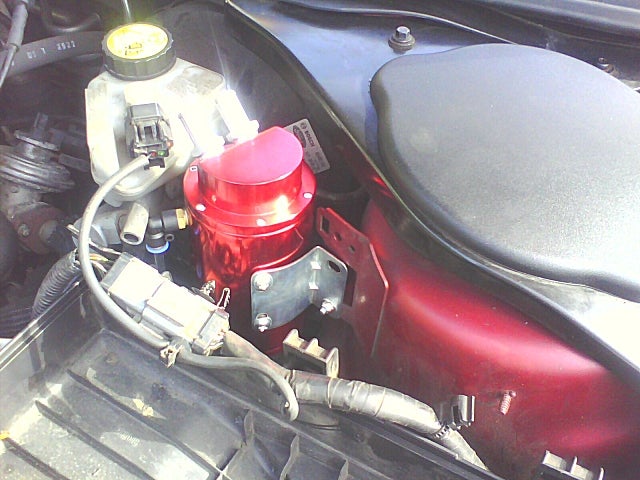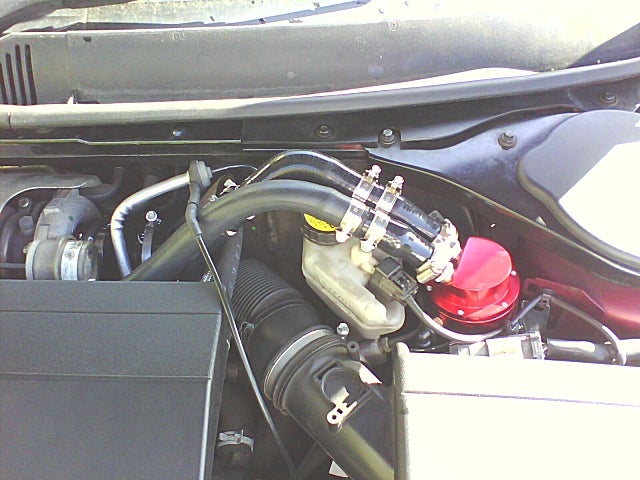Registrations
We now manually approve all new user accounts due to a large influx of spam bots. Accounts are normally approved within 48 hours.
If you need any help with using this Wiki, please ask here: TalkFord.com Wiki Submission Forum
TDDi Catch Tank
For more information, visit the Ford Mondeo forum on TalkFord.com, the definitive resource site covering all Fords from the present day to the 1970's.
|
Overview Guide | |
| Ford Model: | Mondeo |
|---|---|
| Petrol/Diesel: | Diesel |
| Estimated Cost: | 50 |
| Difficulty? | Medium |
| How long does this take? | 3 hours |
Mondeo TDDi Catch Tank
Why I think you need one: All Mk3 Mondeos have some form of PCV (positive crankcase ventilation), where oil vapour is drawn from the crankcase into the inlet manifold & burned along with the fuel – but not only does the TDDi produce an awful lot more oil vapour than any other Mk3 engine, as far as I can see, every mk3 engine _except_ the TDDi has some sort of filter arrangement - the “output” is a plain pipe which leads into the pipe between the airbox and the turbo. At low speeds oil vapour settles in the airbox to turbo pipework, the turbo, the turbo pipes & intercooler, then gets sucked in at startup, pulling away from traffic lights etc, and at the MoT smoke test. Where this oil can also mix with the output from the EGR valve, truly evil sludge results.
Other benefits: initial indications are that not only does the car smoke less, but is also quieter (especially the pinking you get at 2000-2500+rpm when booting it before the engine is fully warm), smoother, and feels a bit more perky before the turbo kicks in.
Location: There’s not a lot of choice here – even the best option I found (between the airbox & suspension turret) requires cutting off one of the airbox mounts ... if anyone else has a better idea for location please let me know – believe me, I spent a lot of time looking!
Note on fitting sizes: The fittings on the car are 20mm, and the generic catch tanks on ebay that claim to be 15mm and 10mm are actually 13.5mm and 10mm. You’ll never find pipes/reducers in precisely these dimensions – so instead look for 19mm (aka 3/4"), and 13mm (aka 1/2").
Bits needed:
generic “open” (dual pipe) round alloy catch tank (bin the pipe that comes with it)
2 off 19mm 90 degree elbows & 2 off 19mm to 13mm (3/4” to 3/8”) reducers (I got mine from JJC Race & Rallyl)
8 off 22-30mm hoseclips, 2 off 13-20mm hoseclips, 1 off 55-70mm hoseclip (to replace the one airbox to turbo joint), suitable tool to tighten them
3 off 19mm hose joiners
3/4" pipe. Note: cheap silicone pipe has no reinforcement & will suck flat (so look for 2 or 3 ply silicone ... or heater/radiator hose)
Short self tapping screw, drill, drill bit & screwdriver to suit
Hacksaw, craft knife
M6 washers, M5 washers, short M5 bolts, M5 nuts, small piece of steel plate/strip (for extending mounting bracket)
Fitting:
Remove the engine cover, then undo the hoseclip where the airbox pipe joins the turbo – I’d suggest discarding it & fitting a conventional replacement as I’ve found the hoseclips a pig to refit – even where access is easy.
Undo the hoseclip on the engine breather (rear top left of engine), also undo the three screws holding the airbox lid on, and the pipe on its top right rear corner - you should be able to take the lid off now.
Remove the air filter & put somewhere safe if it’s still serviceable. The airbox lower should now come off – lift the right hand end to remove it from the rubber cups, then pull it slightly right into the engine bay to clear the inlet connection.
Remove the rear rubber mounting cup, then unclip the wiring from the bracket & screwpost on the suspension turret – your car should now look something like pic 1.
Also remove the existing breather pipe from the airbox top & clean up any oil.
The right rear airbox lower fitting peg needs removing to allow the catchtank to sit low enough – I used a hacksaw to chop it off at an angle matching the other fittings & cleaned up with a craft knife – see pics 2 & 3 (note that the airbox lower is upside down in pic 3).
Refit the airbox lower – I found it a bit wobbly, so I drilled a small pilot hole through the duct on the airbox into the inlet pipe & screwed them together – see pic 4
I fitted the bracket that came with the catch tank, the screws that came with it were a bit too long, so I used extra washers so I could apply an appropriate torque without punching through the tank body ... after a little bending, I found I could orient the pipe spigots in roughly the right direction & use M5 fittings to bolt the bracket to the turret using existing holes on the bottom (see pic 5) ... no such luck on the top though – and extra plate is required (sorry, no photos of that yet).
Refit the airbox top, making sure you tighten the hose to the turbo, refit the pipe to the top right rear of the airbox, and refit the wiring you disturbed earlier.
Pics 6 & 7 are of the tank fully plumbed in – the rear connection runs something like:
90 degree elbow cut down approx. 30mm fitted to the air inlet pipe, rotated to point back and left, connected to ...
19mm coupling, connected to the other 90 degree elbow (rotated to point towards the catchtank), which is connected to ...
another 19mm coupling, connected to a 19mm->13mm reducer, which connects to the catch tank.
The front connection is a length of 19mm pipe, connected at one end to the engine breather outlet, a 19mm coupling at the other, which is connected to the other 19mm->13mm reducer, which connects to the catch tank.
Make sure nothing is in a position where it will rub on anything else – especially the hoseclips. C
heck connections & refit the engine cover, start the engine & check again, test drive & check again.







 Your Privacy Choices
Your Privacy Choices